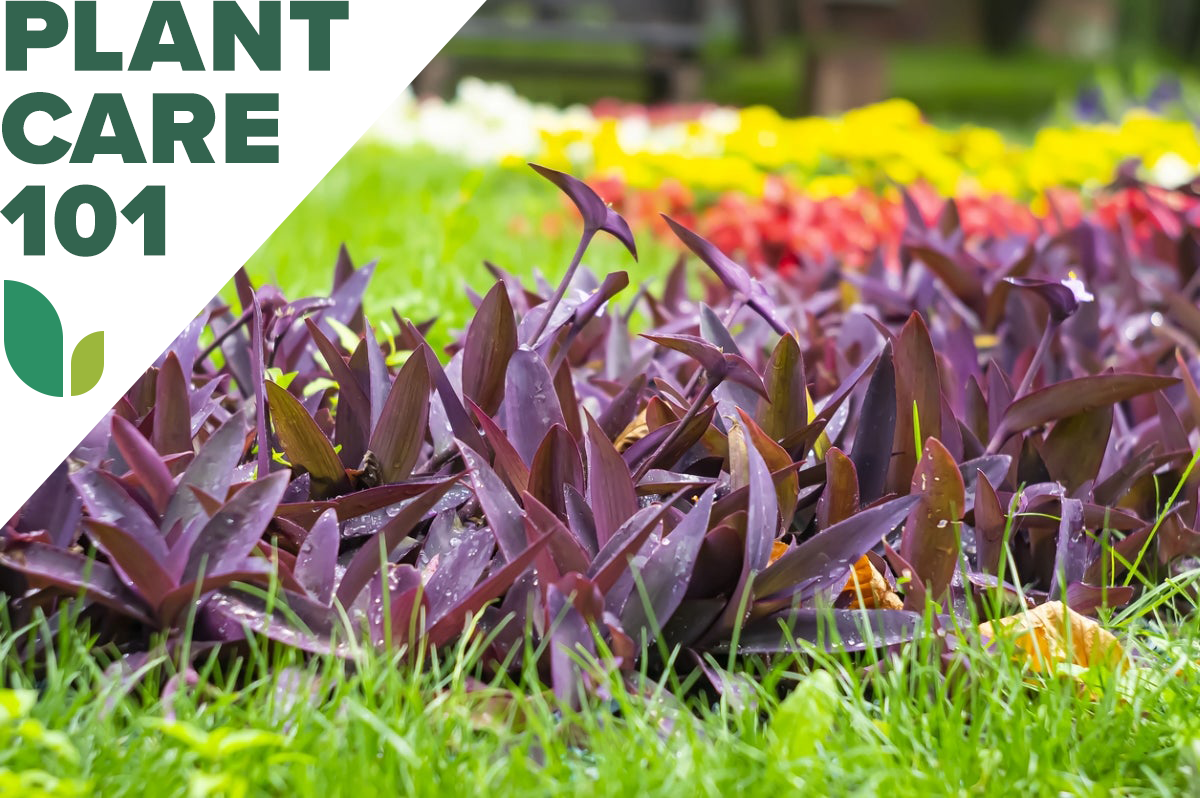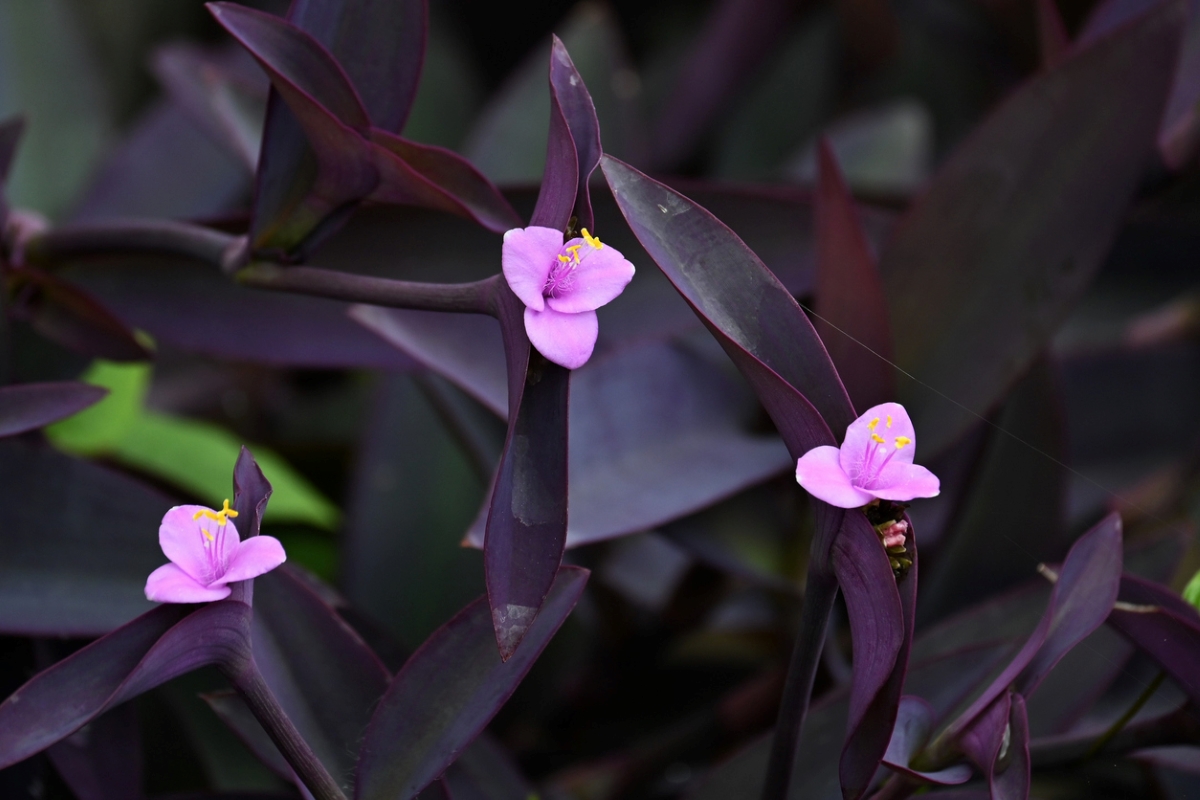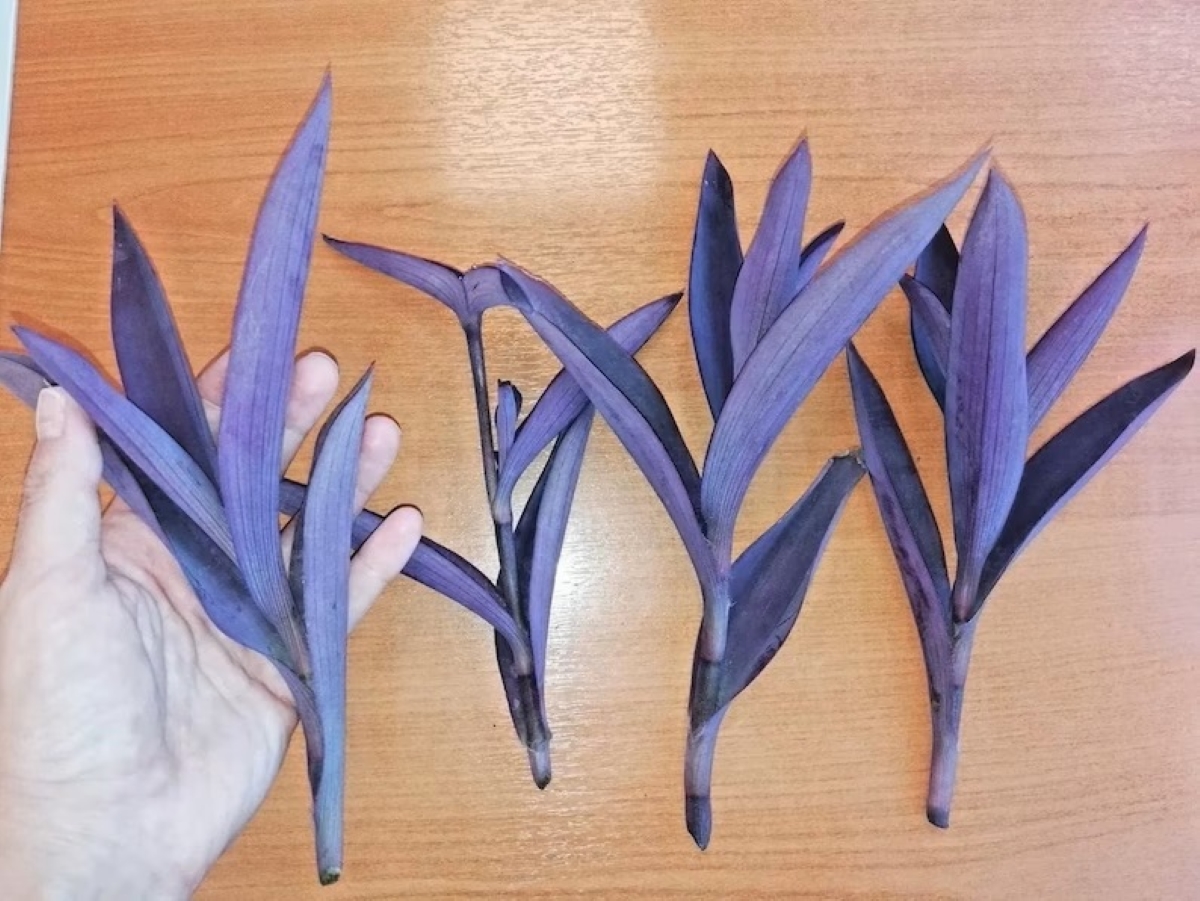

We may earn revenue from the products available on this page and participate in affiliate programs. Learn More ›
With their striking purple leaves and gorgeous flowers, purple heart plants are a beautiful addition to any ornamental garden. They are also easy plants to grow, making them perfect for beginner gardeners. The purple heart (Tradescantia pallida ‘Purpurea’) plant tolerates a wide range of soil conditions, and it can grow indoors, too.
Here is what you need to know about purple heart plant care, including purple heart watering requirements, sunlight and soil needs, and propagation instructions.
RELATED: 20 Flowers That Attract Bees to Your Garden
Growing Purple Heart Plants at a Glance
Common Name: Purple heart, purple queen plant, purple secretia
Scientific Name: Tradescantia pallida ‘Purpurea’
Hardiness Zone: Zones 7 through 10
Soil: Moist, well-draining; pH 6 to 8
Light: Full sun
Water: Drought-tolerant
Food: No fertilizer required
Propagation: Stem cuttings
Safety: Causes skin irritation in people and pets
Purple Heart Plant Characteristics

Purple heart plants are native to the Gulf Coast of Mexico, growing from Tamaulipas to Yucatan. Since they’re hardy in USDA hardiness zones 7 through 10, however, they have become a popular choice as evergreen perennials in the United States. Known scientifically as the Tradescantia pallida ‘Purpurea’, the plant gets its common name from its lance-shaped deep-purple leaves. It begins to flower in midsummer, producing tiny pink or purple blooms. Each purple heart flower has three petals.
It is also perfectly possible to grow a purple heart plant indoors. In fact, they are listed among plants that might improve indoor air quality by filtering out volatile organic compounds (VOCs).
Other Recommended Tradescantia Varieties
Purple heart plants are part of the genus Tradescantia, commonly known as spiderwort. Here are some related species and varieties to consider planting.
- Tradescantia pallida ‘Variegata’ (Variegated Purple Heart) has striped red and pink leaves.
- Tradescantia spathacea (Oyster Plant), commonly known as Moses-in-the-cradle, has leaves striped with purple and green.
- Tradescantia virginiana (Virginia Spiderwort) blooms briefly, with some of its flowers only lasting for a single day.
- Tradescantia fluminensis (Small-Leaf Spiderwort) features bright green-and-white striped leaves and is frequently used as a creeping ground cover.
- Tradescantia ohiensis (Ohio Spiderwort) produces tiny purple or blue flowers, giving it the common nickname of bluejacket.
Planting Purple Heart Plants

Even though this plant is easy to grow indoors and outside, it helps to know more before planting purple heart plants. Keep reading to learn the best time of year to plant purple heart plants, ideal locations for them in the garden, and the basics of purple heart care.
When is the best time to plant purple heart plants?
The best time to plant purple hearts varies depending on where you live. In areas with mild winters, you can plant them outside as soon as the soil is dry enough for digging, which may be as soon as February or March if temperatures remain above freezing. In colder climates, wait until after all danger of frost has passed in later spring before planting purple hearts outdoors, so they aren’t damaged by cold weather.
Where can purple heart plants grow?
Purple heart plant care should include exposure to full sun, which encourages blooms to thrive and boast the best color. For this reason, purple hearts need direct sunlight for at least 6 hours each day. They can also grow under partial shade, but they will not flower as well if they do not receive full sunlight. Avoid planting purple hearts in the shadow of taller plants.
How do you plant purple heart plants?
These step-by-step instructions for planting purple hearts will ensure the best results.
- Choose a location that receives at least 6 hours of sunlight each day.
- Dig a hole about twice as wide as the root ball and deep enough so that the top of the root ball is level with the ground when planted.
- After placing the plant into the hole, fill in the area around the root ball with soil, tamping it down gently.
- Water the plant thoroughly.
Can you grow purple heart plants in containers?
Although they grow well when planted in a garden bed, purple hearts can also grow in containers. Plant them in raised beds or individually in pots as desired, or in a hanging basket so they drape over the edge of the container. Gardeners in cooler climates can let purple heart plants grow outdoors in containers during warmer months before bringing them indoors for winter when temperatures below 50 degrees Fahrenheit arrive.
RELATED: 30 Gorgeous Plants That Attract Hummingbirds to Your Garden
Watering Purple Heart Plants
Though purple heart plants are drought-tolerant and will survive with minimal access to water, they will do best if watered consistently throughout the growing season. Water purple heart plants whenever the top inch of their soil feels dry. This plant prefers to be watered deeply and allowed to dry out between watering rather than being kept constantly moist.
Younger purple heart plants require more water than established ones, so they typically need to be watered once a week. If bringing the plant indoors for winter, cut back on watering until it shows new growth.
Fertilizing Purple Heart Plants
When grown outdoors, purple heart plants don’t require fertilizer, but monthly application of a balanced fertilizer while growing outdoors can help growth. When grown as houseplants, they should be fertilized twice per month during their growing season.
Propagating Purple Heart Plants

Purple hearts can easily be propagated via stem cuttings. When propagating purple heart plants, use sharp, clean scissors to cut a stem that’s between 3 and 6 inches long and includes at least one growth node. Remove the lower leaves from the stem so that there are at least 2 inches of stem exposed. Dip the cut end of the stem in a rooting hormone mixture and place the stem in water until roots form before transplanting it into soil or a pot filled with sterile potting mix.
Safety Considerations
The purple heart plant can cause contact dermatitis in people and animals when its sap comes into contact with skin. To prevent this, be sure to wear gardening gloves while caring for a purple heart plant, including while planting, pruning, and propagating purple hearts. While not definitively listed as toxic to people or pets, it is best to keep the plant (and its sap) out of reach of children, cats, dogs, and other pets. Its relative, T. fluminensis is listed as toxic to cats, dogs, and horses by the American Society for the Prevention of Cruelty to Animals (ASPCA).
Potential Pests and Diseases

Luckily, purple heart plants don’t face many serious issues when it comes to pests or diseases. They can, however, fall victim to standard garden pests like aphids, vine weevils, scales, and mealybugs. They may also attract snails, slugs, and caterpillars. Keep pests at bay by planting a layer of wood chips around the base of each purple heart plant in the garden.
Preparing Purple Heart Plants for Winter
Purple heart plants are hardy year round in zones 7 through 10, so no winter preparations are necessary. Even if those areas experience a frost overnight, an established in-ground plant will ultimately bounce back in spring, even if it briefly dies off in the colder months. If overwintering your purple heart plants indoors in colder climates, be sure to bring the plant inside well before the first frost of the season.
Looking for more low-maintenance perennials for your home landscape? Check out our guides on caring for coleus, hibiscus, and azalea.
